| |
|
|
|
CIVIL WAR MODEL
1863 BRASS FACED ARTILLERY BITS – VERY NICE SPECIMENS:
The Model 1863 Brass Faced Artillery Bit was
developed during the Civil War and was manufactured only
during the final two years of the war.
These artillery bits featured a embellishment not
afforded to the cavalry bridle bits issued during the
war – that of the brass facing reminiscent of many of
the bits used by the early US Army Dragoons. Differing
from brass plating, brass facing is an applied heavy
veneer of brass overlaid only on the exterior surfaces of
the iron cheek pieces, rein rings, and the lower
"slobber" bar. The brass facing was subject to
wear and peeling, so finding these bits with the facing
intact is a definite added value.
Francis Bannerman and other military surplus dealers
listed these bits as Civil War officers’ bits and many
collectors continue to cherish this belief. While it is
certain that officers from all branches of the army
obtained these bits for their own use, these distinctive
bits were designed for the teams of heavy horses that
delivered the field pieces to the battlefields.
Many of these decorative bits were subjected to post-war
modifications resulting in relatively few of them
surviving in their original form, making them one of the
scarcer of the Civil War Bridle Bits, and these Model
1863 Artillery Bits are prized today as one of the most
attractive bits ever issued by the U.S. Army.
I have the following specimens listed below, each
individually described with accompanying photographs.
|
|
NO. 1 MODEL
1863 BRASS FACED ARTILLERY BIT – EXCELLENT SPECIMEN IN
ALMOST “LIKE NEW” CONDITION:
In excellent condition, this specimen shows
little, if any, evidence of use. It still retains all
of the undisturbed original brass facing, including that
on the rein rings and slobber bar. The brass facing has
a pleasing natural aged patina overall.
The bit is maker marked under the off side bridle strap
slot “J. M. FRAZEE & Co.” of Newark, New Jersey, and the
government inspector’s cartouche is stamped under the
near side bridle strap slot. Both cheek pieces are
stamped “US” on the inside surface, just below the curb
bar. There is a numeral “5” stamped on the inside of
the near side cheek piece just below the bridle strap
slot, likely a reference to the size of the port in the
curb bar.
As
stated above, this bit shows no sign of use, presenting
in as close to “like new” condition as I have seen save
for the one example of this bit which was part of a
cased set of inspector gauges. It has not been
subjected to poor storage, nor has it suffered from age,
and there is no damage or misshaping. The exposed steel
on the inside faces of the branches and the mouthpiece
are overall clean with no pitting. The lower bar at the
bottom of the bit, often removed for a variety of
reasons, has remained intact.
This is an excellent specimen that would be almost
impossible to upgrade.
(1109)
$850
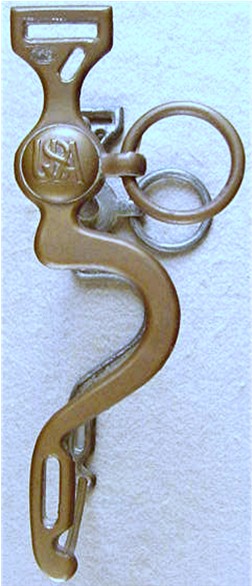 |
|
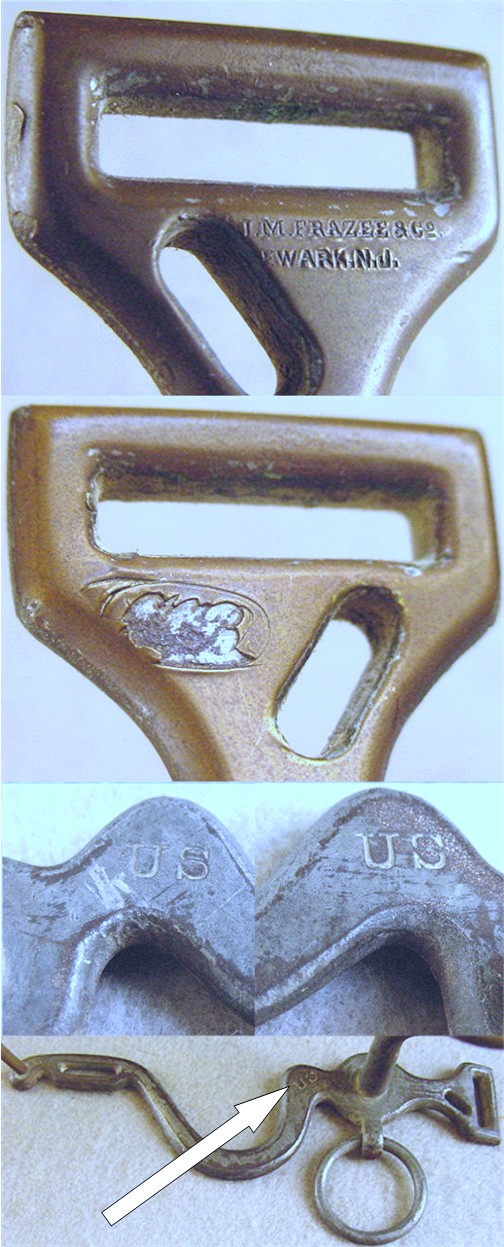 |
|
 |
|
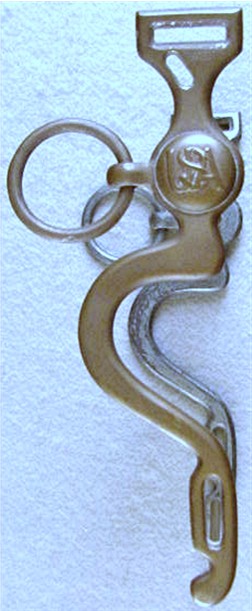 |
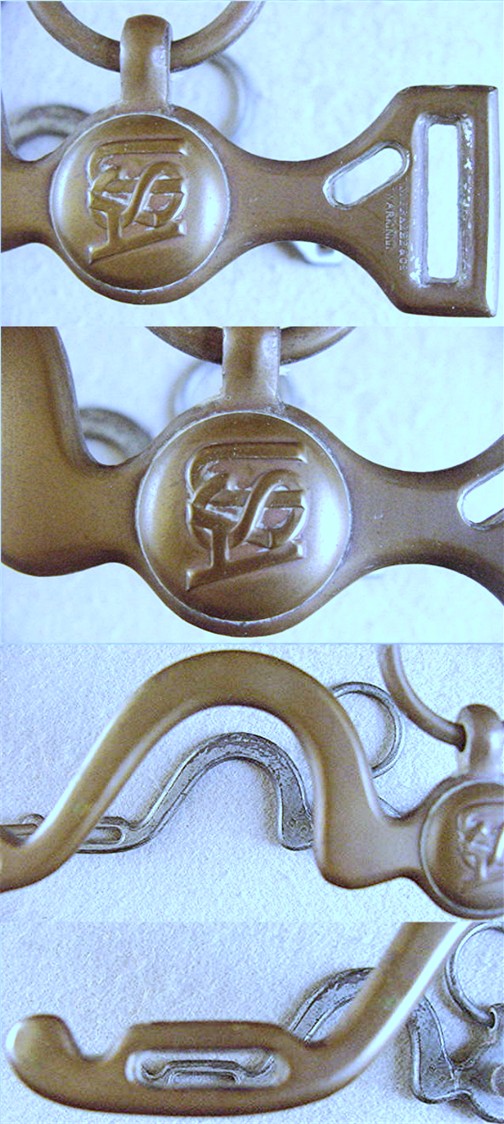 |
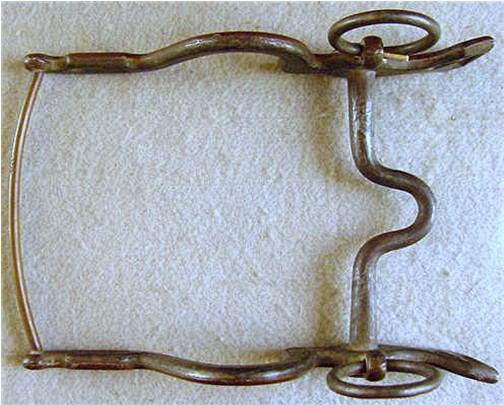 |
|
NO. 2
MODEL 1863 BRASS FACED ARTILLERY BIT – VERY NICE
SPECIMEN:
This specimen
shows evidence of use, but still retains the majority of
the original brass facing. The brass facing has a
pleasing undisturbed aged patina overall. The curb bar
is stamped “US” on the right end of the bar.
This bit has not been
abused nor has it suffered from age or poor storage,
with no damage or bending out of its original shape.
The exposed steel on the inside faces of the branches
and the mouthpiece are overall clean with no significant
pitting and generally smooth. The lower bar at the
bottom of the bit, often removed for a variety of
reasons, has remained intact.
The only modification to
which this bit was subjected is the removal of the upper
rein rings which were attached at the rear of the boss
swells. These artillery bits were fitted with two sets
of reins – one set attached to the upper rings and the
other set attached to the rein slots at the bottoms of
the cheek pieces. The double reining system was
considered by some of the officers and soldiers as
unnecessarily complex, and too, the second set of reins
added to the amount of harness which could become
tangled or fouled to the determent of both horse and
rider. These bits, as with all horse equipment, were
subjected to as much modification as the senior officers
would tolerate. Such is the case with this bit, as it
is obvious that it remained in service long after the
upper rein rings were removed, apparently serving a gun
crew and their horse team, or an officer’s personal
mount quite well.
Overall, this is a very
nice specimen and one that will display nicely in your
collection. (0823) $475
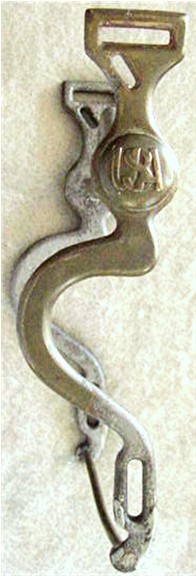 |
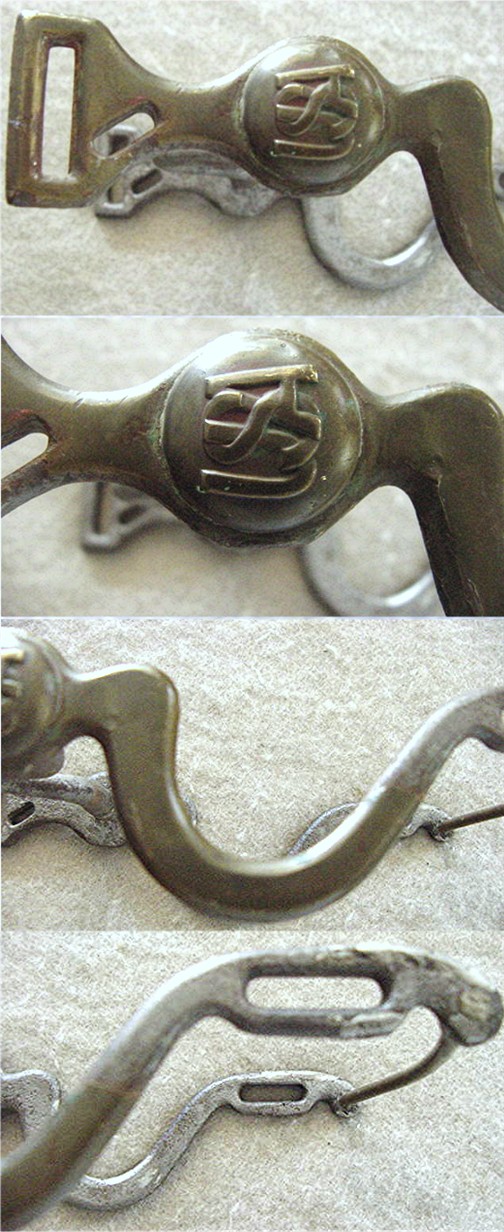 |
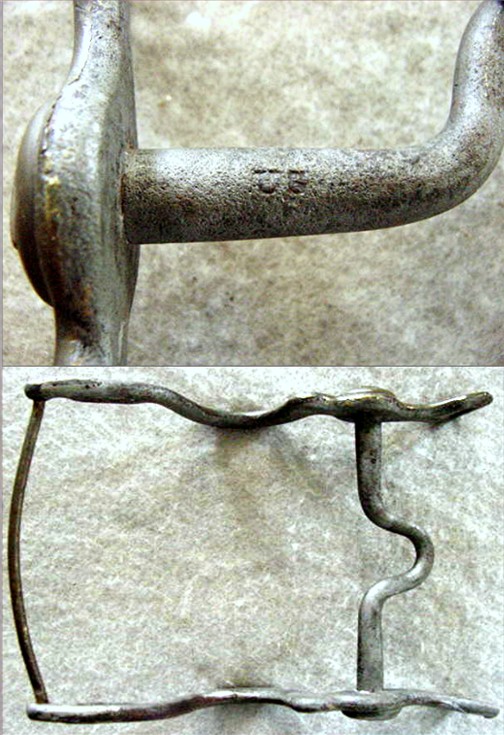 |
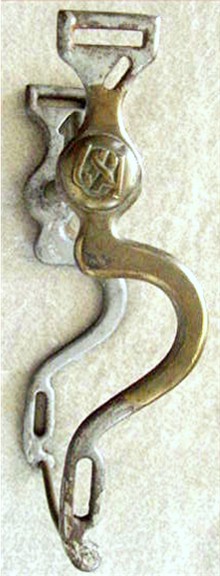 |
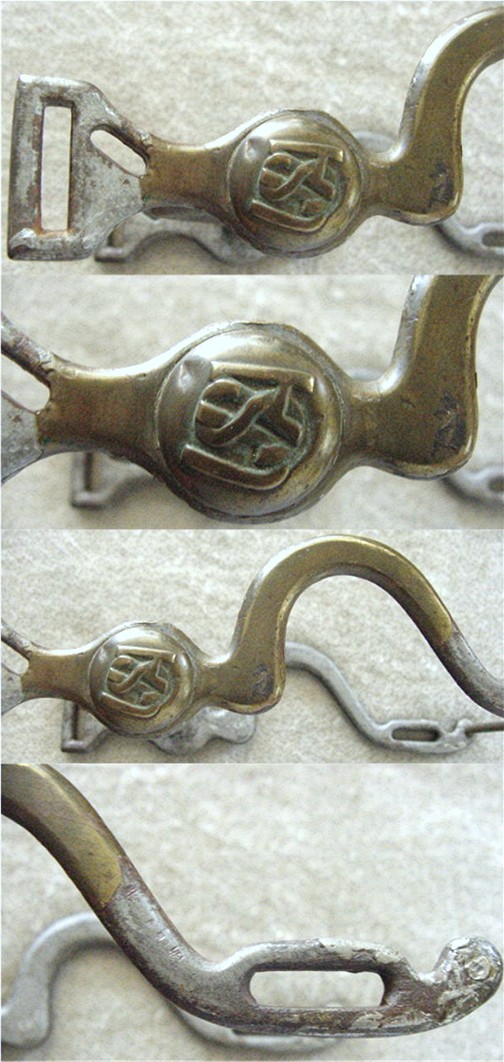 |
|
COLLECTOR’S NOTE:
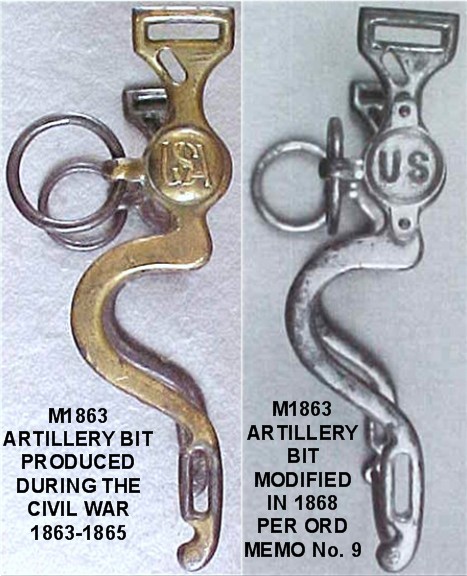
There is a prevailing misunderstanding as to the
identity of the original Model 1863 Artillery Bit as it
presented during the Civil War, and the modifications to
the bit that were ordered after the war. The Model 1863
Bit was originally produced as a brass faced bit with
the dome shaped, brass shell lead filled decorative
bosses bearing the intertwined USA. The brass facing, a
holdover from the earlier Dragoon Period, did not
survive well in service and as the underlying iron began
to corrode, the thin brass sheeting would break away.
After the war, the army having long recognized corrosion
as a significant problem, had the time and resources to
seek out a solution and they began experimenting with
plating – both tin and nickel – on firearms, bits, and
a number of fittings associated with horse equipment.
As a result of the 1868 Ordnance Board, the following
order regarding bits was issued as part of Ordnance
Memoranda No. 9:
“TINNING ARTILLERY AND CAVALRY BITS – The
Board recommend (sic) that all new artillery and
cavalry bits should be tinned, and that all old bits
requiring repairs or cleaning should likewise be tinned,
instead of bluing or replating.”
In the process of refurbishing the Model 1863 Artillery
Bits then in service, the decorative “USA” bosses had to
be removed. The thin brass shell likely did not survive
being removed in a condition that would be acceptable to
be reattached. The more substantial cast brass “US”
bosses in use on cavalry bits were far more durable,
were much easier to attach, and were available in
quantity, so as the artillery bits were refurbished, or
new bits were produced, the cast “US” bosses replaced
the “USA” domed shells. This process yielded the bit
shown on the right in the accompanying photograph –
compared to the Model 1863 Artillery Bit in its original
form shown on the left.
The experimentation with plating yielded limited
positive results, and the army’s dissatisfaction
resulted in the effort being soon abandoned.
As a result of the short period in which the bits were
tin plated, few plated specimens of the Model 1863
Artillery Bits, or the Model 1859 and Model 1872 Cavalry
Bits, survive today. Most of these Civil War era bits
which were modified for continued use in the early
Indian War years are found today with patinated bare
iron, with a very few of those in particularly good
condition retaining one degree or another of the
original blue finish.
In 1887 the artillery adopted the Model 1874 Shoemaker
Bit then in use by the cavalry and the Model 1863
Artillery Bit was declared obsolete.
|
|
|
|
|
|
|
|
|
|
|

